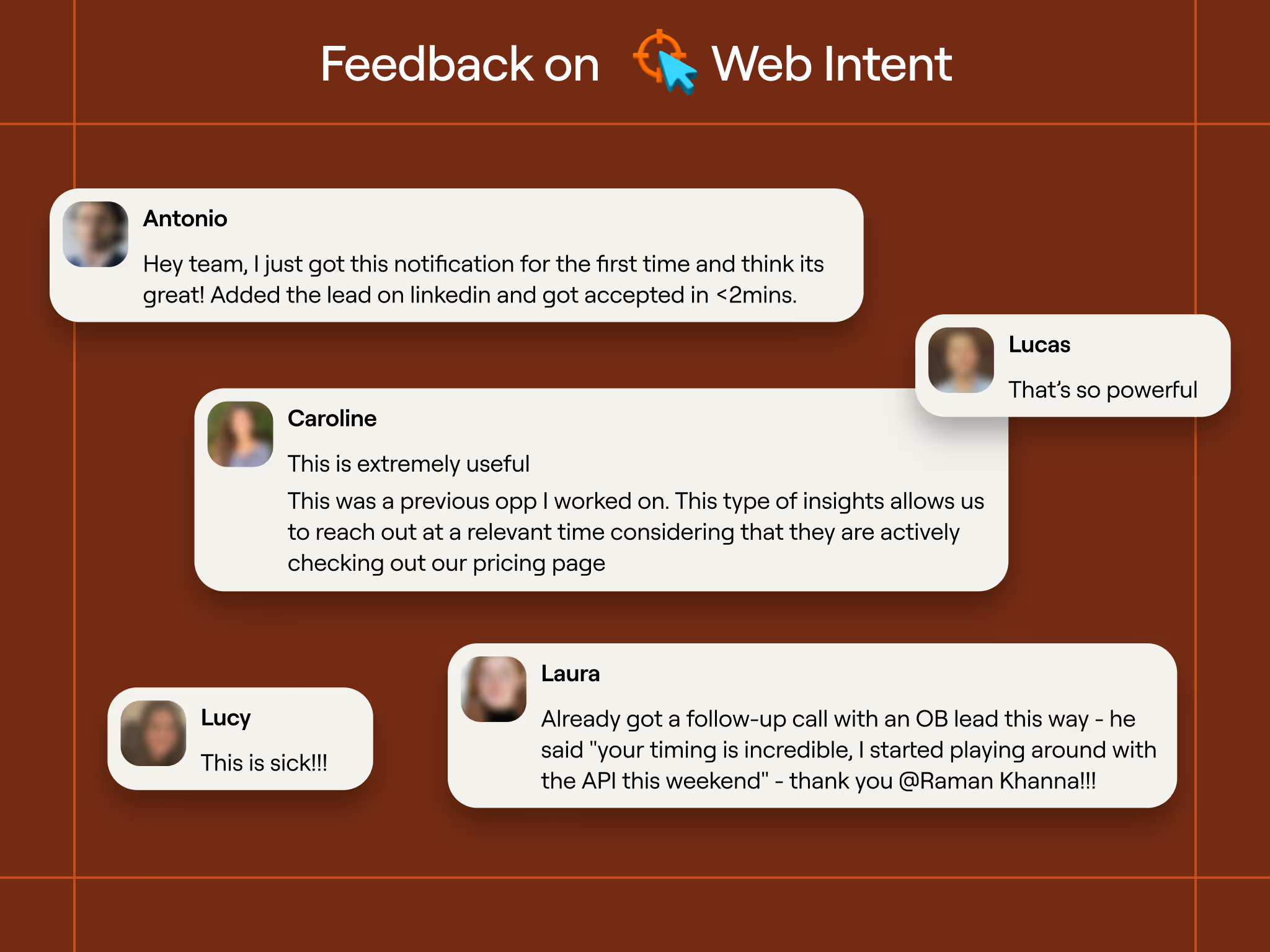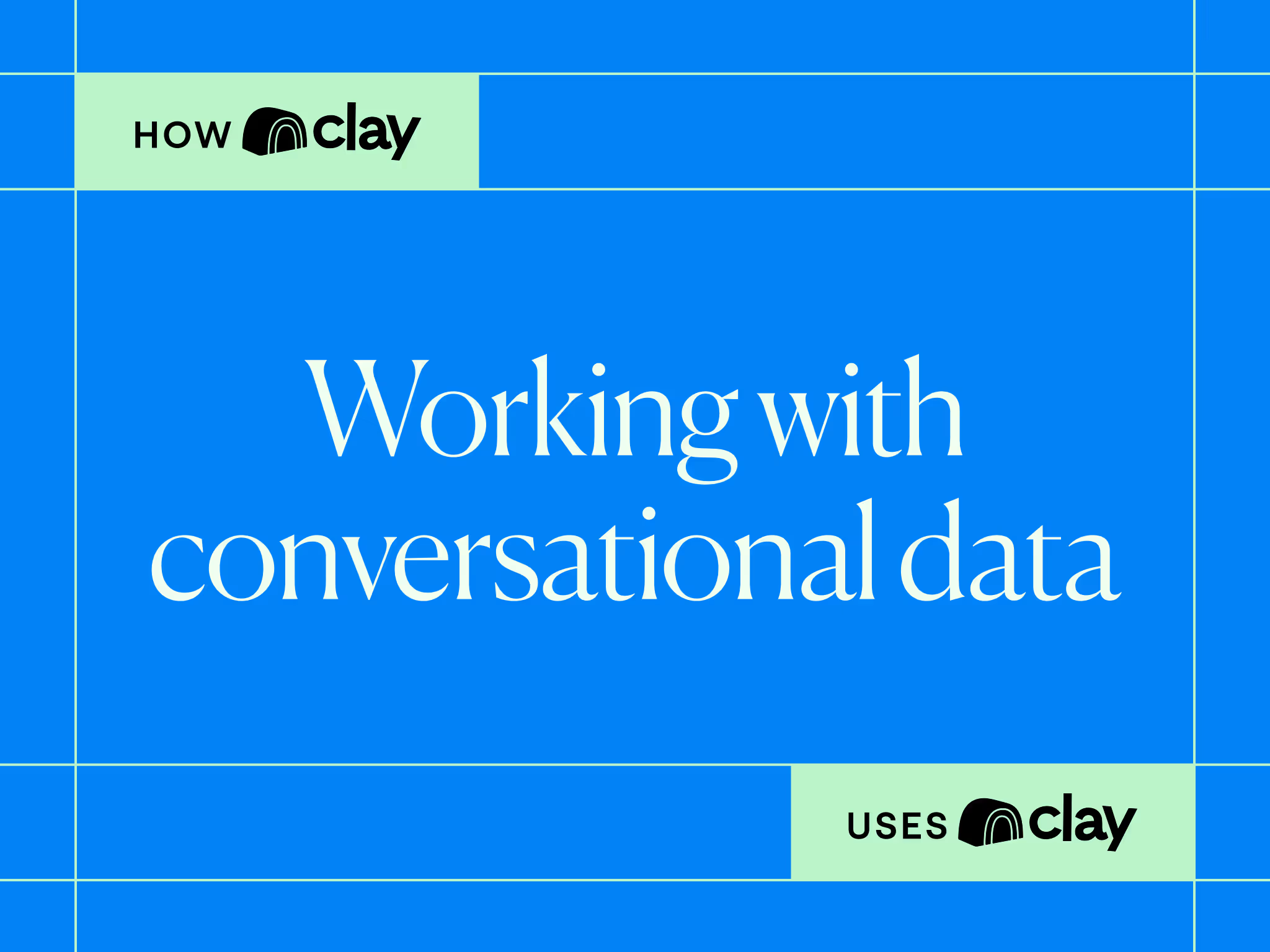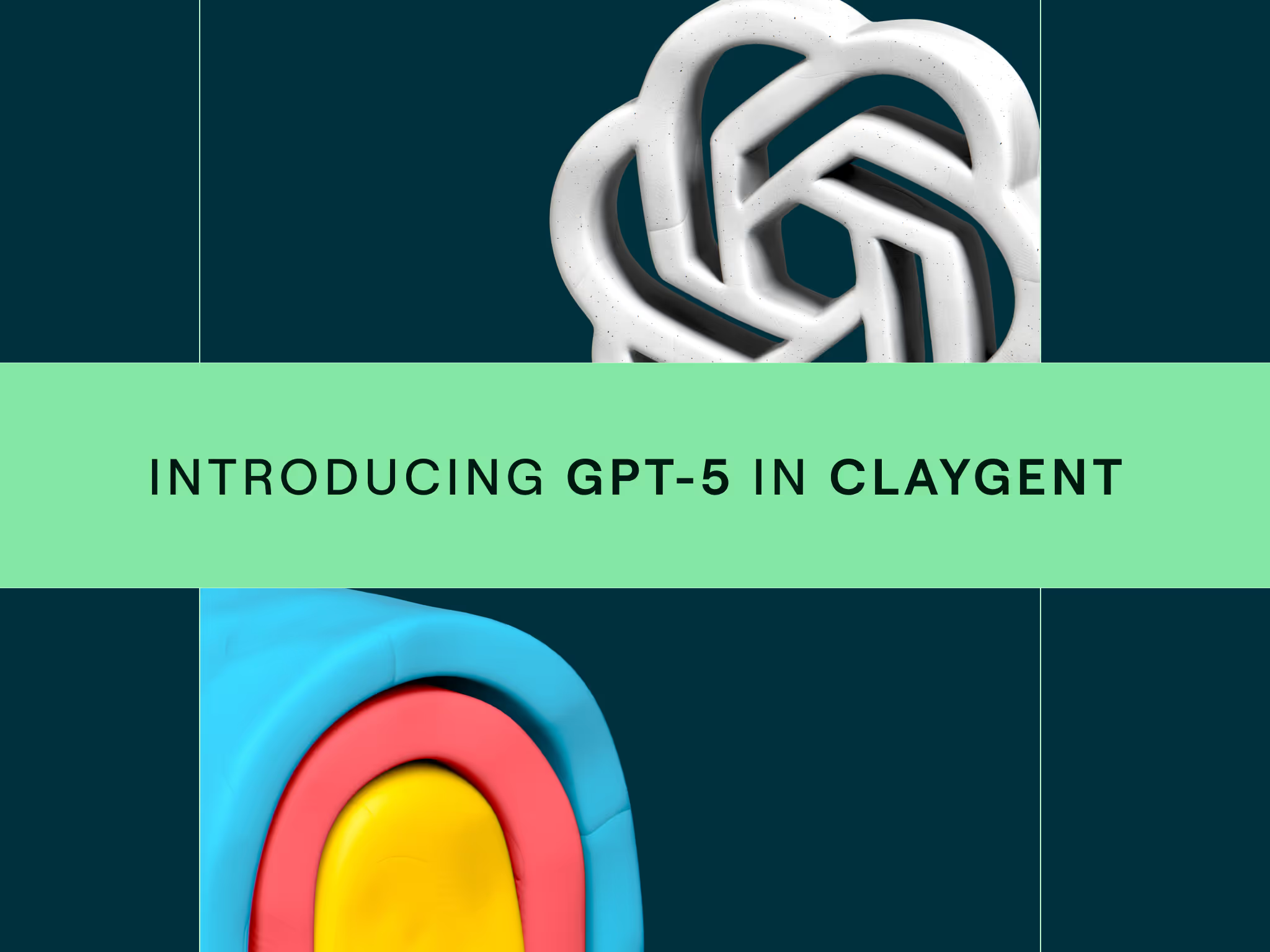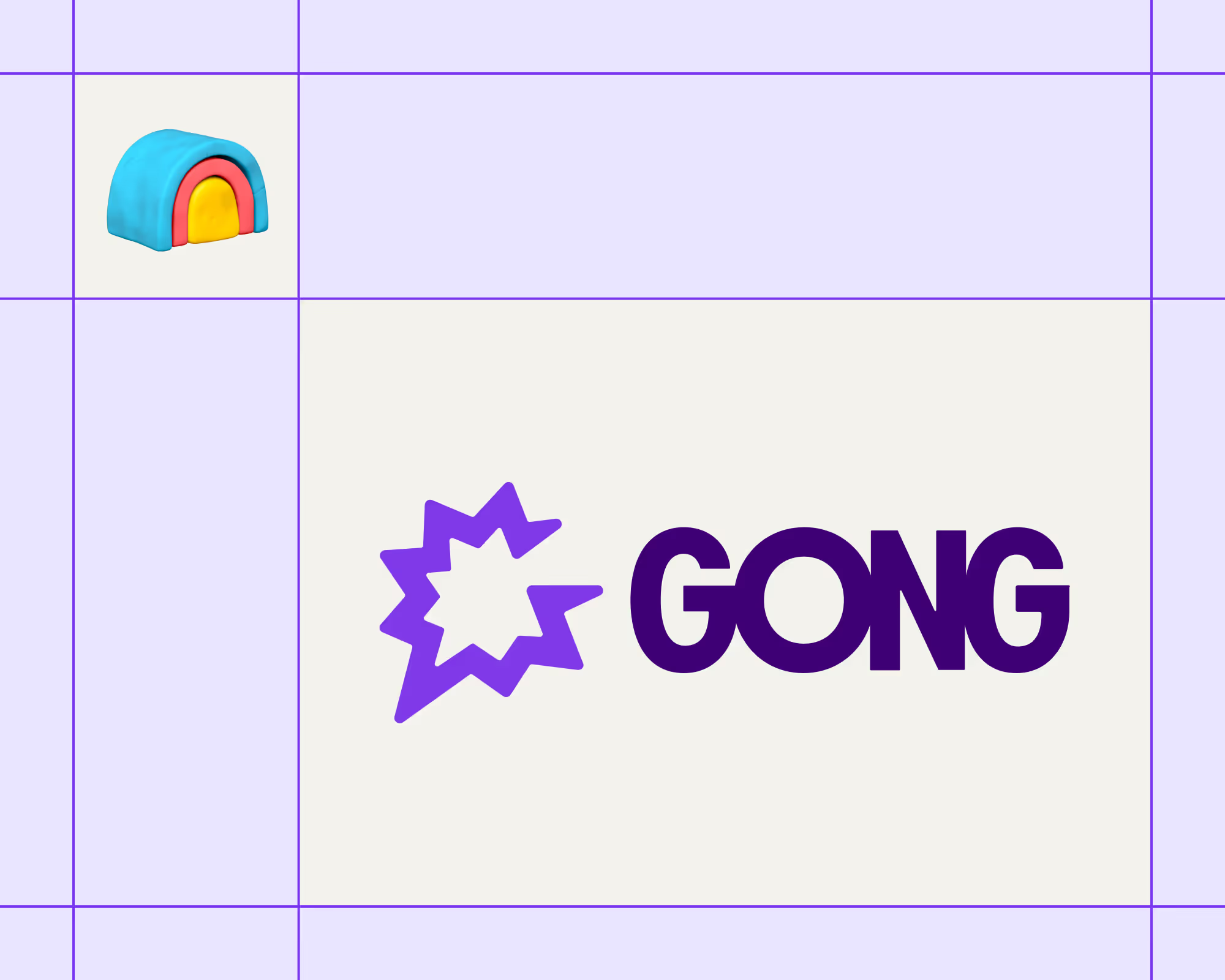AI can make personalization easy and sameness inevitable. When every rep can now use AI in their outreach, it’s easier than ever to create generic messages—and harder than ever to stand out from the noise in a prospect or customer’s inbox.
Winning teams flip this script. They use AI and data in creative ways to find GTM alpha—their competitive edge. They seek unique, differentiated data about their customers, and act on it before competitors can.
When we launched Signals earlier this year, we shared some examples of this in practice — Vanta monitors SOC2 certification announcements and CISO job postings. Cursor listens across Reddit, X, and YouTube to find new prospects. Density tracks office lease expiration dates. Each of these signals captures buying moments unique to that company’s ICP.
Today, we’re adding to this foundation with one of our most exciting signals yet: Web Intent. You can now see which target accounts visit and engage with your website, and automatically trigger outreach workflows—all enriched with data from 150+ providers on our platform.
Unlike many other signals that reveal future intent (for example, a new hire or funding round suggests a company might buy later), website visits show current intent—an immediate interest in your products and services. Combined with enrichments in Clay, Web Intent amplifies the unique plays you can run to stand out from the noise.
Turn anonymous visitors into known accounts
With Web Intent, you can de-anonymize company-level traffic to identify which accounts are visiting your site. You can track engagement across specific pages, monitor time spent on site, filter by region and page, and set thresholds for visit frequency that indicate genuine buying intent.
For example, Chili Piper identifies which accounts visit their website, matches them with their CRM, and automatically alerts the right AMs/AEs when it matters most. Whether it’s an existing customer exploring features they don’t yet use, a high-scoring prospect showing fresh intent, or a visitor diving into product and integration pages, Web Intent lets them turn anonymous traffic into real and personalized sales conversations.
Expand coverage with waterfall enrichment
With Clay’s waterfall enrichment, you can use multiple providers and query each vendor until you find a successful match. We’re excited to support industry-leading providers for this launch.
- Snitcher: Identify anonymous website visitors and convert high-intent traffic the moment it lands.
- Demandbase: Enterprise-grade account identification with intent signals from a global network of B2B sites
- Dealfront: European market leader combining website visitor tracking with company intelligence and contact data
- Warmly: Identifies your warmest leads starting with their top rated website de-anonymization, identifying 65%+ of the companies that visit your website.
Other providers we support include Clearbit, PDL, and Versium. Access to multiple providers means higher match rates and accuracy, better regional coverage across different company sizes and geographies, and confidence that you're capturing every high intent account.
Find executive buyers and decision-makers
Once you identify and de-anonymize accounts on your website, you can run a people search in Clay to find executive buyers and decision makers at these accounts. You can also bring information from your CRM into Clay, to check if the account already has a contact associated, and is assigned to a rep.
Layer website intent with complete buyer context
Knowing that "Acme Corp visited your site" is marginally useful. Knowing that Acme Corp is a 500-person fintech company that uses Salesforce and HubSpot, is hiring for compliance roles based on recent job postings, and that they spent 15 minutes on your pricing page is intent that lets you build truly personalized plays.
You can layer enrichments from Clay’s 150+ data providers, on your website intent data: including funding history, tech stack, hiring activity, news mentions, social signals, CRM data, or custom research using Claygent.
ElevenLabs uses Web Intent to track when their ICP visits key web pages like enterprise and pricing. From there, they enrich this activity with additional context like recent news mentions, revenue, hiring activity, and team size, and score each account.
When an account hits a high score, they take action in two ways:
- If the account is already assigned to a rep: Clay sends them a Slack alert, so they can follow up immediately.
- If the account is unassigned: It flows into a HubSpot nurture campaign, where Claygent adds personalization to the outreach message.
.avif)
This lets their sales team prioritize high-intent accounts at exactly the right moment. Here’s what their reps had to say about the feature:

“Web intent helps our sales team prioritize high-intent accounts engaging with our website, and reach out at the right moment.” - Raman Khanna, Growth @ElevenLabs
Similarly, Jimmy Downing from Next Glass tracks accounts visiting their website and uses AI to identify which visitors are within their ICP. When a potential prospect is detected, their sales team receives an instant Slack alert with actionable context—including the business name, pages viewed, employee count, and primary service offerings in their industry.
Start with these plays
Trigger outbound sequences when target accounts visit your website
Launch automated outbound campaigns when ICP accounts visit your product or pricing pages and enrich them with data like tech stack, company funding, and employee size. Start by defining which page combinations indicate serious evaluation intent. For most B2B companies, this means tracking visits to pricing, enterprise features, integrations, or technical documentation. Set your intent threshold based on your average sales cycle. If you typically see 2-3 month evaluation periods, a single visit might not warrant outreach. But if someone visits your pricing page, returns two days later to read case studies, and comes back again the following week to check your API documentation—that pattern suggests active evaluation.
Steps to launch this play
- Check if the account already exists in your named account list (in your CRM).
- If the account doesn’t exist in your CRM, add enrichments like employee count, industry, revenue, and any other qualifying criteria. You can also use AI to score these leads and verify ICP fit
- Identify the right person to contact: find relevant decision-makers using a people search in Clay
- Gather additional context: recent funding, technology stack, job postings, news mentions
- Build the outreach message: use Claygent to research their specific use case and challenges
- Optional step: create a new account for the enriched contact in your CRM
Revive cold opportunities when they re-engage with your website
Every GTM team has dormant accounts that can come back to life. With Web Intent, you can make sure your reps never miss them. If a closed-lost deal or cold opportunity starts visiting again, Clay automatically surfaces it in your CRM or Slack. Your rep sees exactly which pages the account explored and can follow up with relevant context (“Saw you might be interested in our integrations — happy to walk you through what’s new”).
Steps to launch this play
- Check if the account already exists in your named account list (in your CRM).
- If the account doesn’t exist in your CRM, add enrichments like employee count, industry, revenue, and any other qualifying criteria. You can also use AI to score these leads and verify ICP fit
- Identify the right person to contact: find relevant decision-makers using a people search in Clay
- Gather additional context: recent funding, technology stack, job postings, news mentions
- Build the outreach message: use Claygent to research their specific use case and challenges
- Optional step: create a new account for the enriched contact in your CRM
Act on intent from ABM accounts
Timing is everything in ABM. By layering website activity on top of your named account list, your reps can see which companies are heating up in real time.
Steps to launch this play
- Check if the account already exists in your named account list (in your CRM).
- If the account doesn’t exist in your CRM, add enrichments like employee count, industry, revenue, and any other qualifying criteria. You can also use AI to score these leads and verify ICP fit
- Identify the right person to contact: find relevant decision-makers using a people search in Clay
- Gather additional context: recent funding, technology stack, job postings, news mentions
- Build the outreach message: use Claygent to research their specific use case and challenges
- Optional step: create a new account for the enriched contact in your CRM
Score accounts based on website engagement
Score accounts based on a combination of website intent data, combined with other enrichments and signals. Equip reps to prioritize the right accounts at the right time, and automatically sort and filter accounts that are assigned to specific reps and territories.
Trigger competitive comparison campaigns
When companies using your competitors visit your website—particularly comparison pages or migration guides—they're signaling openness to switching. Create workflows that reach out with your strongest competitive differentiation points and customer stories from similar switchers.
Get more step by step plays on Clay University.
Start tracking your website visitors
Web Intent is available to customers on Clay’s Pro and Enterprise plan. Book a demo with our team to learn more, or check out our Clay University guide to this feature.
FAQs
What providers does Web Intent support?
Clay's waterfall approach means you get better coverage than any single provider. We automatically query multiple vendors—PDL, Versium, Clearbit, Snitcher, and Dealfront—until we find a match.
How does pricing work?
Web Intent is currently available on our Pro and Enterprise plans. Credits are charged based on unique IPs resolved over a 30-day period (e.g. if 1000 visitors from the same companyIP visit your website, you will only be charged once over a 30 day period) .
The Web Intent action will be run in a waterfall and we charge based on which provider returns a successful enrichment. We currently support the following providers: Snitcher, Warmly, Demandbase, Clearbit, Dealfront, PDL, and Versium. Credit costs by provider can be found when you set up Web Intent and configure your de-anonymization settings in the Clay app.
Is this company-level or person-level de-anonymization?
The feature currently supports company-level denanonymization only. You can start a people search in Clay to find target contacts at accounts.
Does this work for EU visitors?
Yes, this feature provides coverage in the EU. We’d recommend looking at the websites of our partners for more details on how they approach compliance and data-handling in the EU.
Do visitors need to accept cookies for Clay to begin tracking?
The Clay website tracker integrates with select cookie management tools, but customers typically only turn on the tracker once a user accepts cookies.
AI can make personalization easy and sameness inevitable. When every rep can now use AI in their outreach, it’s easier than ever to create generic messages—and harder than ever to stand out from the noise in a prospect or customer’s inbox.
Winning teams flip this script. They use AI and data in creative ways to find GTM alpha—their competitive edge. They seek unique, differentiated data about their customers, and act on it before competitors can.
When we launched Signals earlier this year, we shared some examples of this in practice — Vanta monitors SOC2 certification announcements and CISO job postings. Cursor listens across Reddit, X, and YouTube to find new prospects. Density tracks office lease expiration dates. Each of these signals captures buying moments unique to that company’s ICP.
Today, we’re adding to this foundation with one of our most exciting signals yet: Web Intent. You can now see which target accounts visit and engage with your website, and automatically trigger outreach workflows—all enriched with data from 150+ providers on our platform.
Unlike many other signals that reveal future intent (for example, a new hire or funding round suggests a company might buy later), website visits show current intent—an immediate interest in your products and services. Combined with enrichments in Clay, Web Intent amplifies the unique plays you can run to stand out from the noise.
Turn anonymous visitors into known accounts
With Web Intent, you can de-anonymize company-level traffic to identify which accounts are visiting your site. You can track engagement across specific pages, monitor time spent on site, filter by region and page, and set thresholds for visit frequency that indicate genuine buying intent.
For example, Chili Piper identifies which accounts visit their website, matches them with their CRM, and automatically alerts the right AMs/AEs when it matters most. Whether it’s an existing customer exploring features they don’t yet use, a high-scoring prospect showing fresh intent, or a visitor diving into product and integration pages, Web Intent lets them turn anonymous traffic into real and personalized sales conversations.
Expand coverage with waterfall enrichment
With Clay’s waterfall enrichment, you can use multiple providers and query each vendor until you find a successful match. We’re excited to support industry-leading providers for this launch.
- Snitcher: Identify anonymous website visitors and convert high-intent traffic the moment it lands.
- Demandbase: Enterprise-grade account identification with intent signals from a global network of B2B sites
- Dealfront: European market leader combining website visitor tracking with company intelligence and contact data
- Warmly: Identifies your warmest leads starting with their top rated website de-anonymization, identifying 65%+ of the companies that visit your website.
Other providers we support include Clearbit, PDL, and Versium. Access to multiple providers means higher match rates and accuracy, better regional coverage across different company sizes and geographies, and confidence that you're capturing every high intent account.
Find executive buyers and decision-makers
Once you identify and de-anonymize accounts on your website, you can run a people search in Clay to find executive buyers and decision makers at these accounts. You can also bring information from your CRM into Clay, to check if the account already has a contact associated, and is assigned to a rep.
Layer website intent with complete buyer context
Knowing that "Acme Corp visited your site" is marginally useful. Knowing that Acme Corp is a 500-person fintech company that uses Salesforce and HubSpot, is hiring for compliance roles based on recent job postings, and that they spent 15 minutes on your pricing page is intent that lets you build truly personalized plays.
You can layer enrichments from Clay’s 150+ data providers, on your website intent data: including funding history, tech stack, hiring activity, news mentions, social signals, CRM data, or custom research using Claygent.
ElevenLabs uses Web Intent to track when their ICP visits key web pages like enterprise and pricing. From there, they enrich this activity with additional context like recent news mentions, revenue, hiring activity, and team size, and score each account.
When an account hits a high score, they take action in two ways:
- If the account is already assigned to a rep: Clay sends them a Slack alert, so they can follow up immediately.
- If the account is unassigned: It flows into a HubSpot nurture campaign, where Claygent adds personalization to the outreach message.
.avif)
This lets their sales team prioritize high-intent accounts at exactly the right moment. Here’s what their reps had to say about the feature:

“Web intent helps our sales team prioritize high-intent accounts engaging with our website, and reach out at the right moment.” - Raman Khanna, Growth @ElevenLabs
Similarly, Jimmy Downing from Next Glass tracks accounts visiting their website and uses AI to identify which visitors are within their ICP. When a potential prospect is detected, their sales team receives an instant Slack alert with actionable context—including the business name, pages viewed, employee count, and primary service offerings in their industry.
Start with these plays
Trigger outbound sequences when target accounts visit your website
Launch automated outbound campaigns when ICP accounts visit your product or pricing pages and enrich them with data like tech stack, company funding, and employee size. Start by defining which page combinations indicate serious evaluation intent. For most B2B companies, this means tracking visits to pricing, enterprise features, integrations, or technical documentation. Set your intent threshold based on your average sales cycle. If you typically see 2-3 month evaluation periods, a single visit might not warrant outreach. But if someone visits your pricing page, returns two days later to read case studies, and comes back again the following week to check your API documentation—that pattern suggests active evaluation.
Steps to launch this play
- Check if the account already exists in your named account list (in your CRM).
- If the account doesn’t exist in your CRM, add enrichments like employee count, industry, revenue, and any other qualifying criteria. You can also use AI to score these leads and verify ICP fit
- Identify the right person to contact: find relevant decision-makers using a people search in Clay
- Gather additional context: recent funding, technology stack, job postings, news mentions
- Build the outreach message: use Claygent to research their specific use case and challenges
- Optional step: create a new account for the enriched contact in your CRM
Revive cold opportunities when they re-engage with your website
Every GTM team has dormant accounts that can come back to life. With Web Intent, you can make sure your reps never miss them. If a closed-lost deal or cold opportunity starts visiting again, Clay automatically surfaces it in your CRM or Slack. Your rep sees exactly which pages the account explored and can follow up with relevant context (“Saw you might be interested in our integrations — happy to walk you through what’s new”).
Steps to launch this play
- Check if the account already exists in your named account list (in your CRM).
- If the account doesn’t exist in your CRM, add enrichments like employee count, industry, revenue, and any other qualifying criteria. You can also use AI to score these leads and verify ICP fit
- Identify the right person to contact: find relevant decision-makers using a people search in Clay
- Gather additional context: recent funding, technology stack, job postings, news mentions
- Build the outreach message: use Claygent to research their specific use case and challenges
- Optional step: create a new account for the enriched contact in your CRM
Act on intent from ABM accounts
Timing is everything in ABM. By layering website activity on top of your named account list, your reps can see which companies are heating up in real time.
Steps to launch this play
- Check if the account already exists in your named account list (in your CRM).
- If the account doesn’t exist in your CRM, add enrichments like employee count, industry, revenue, and any other qualifying criteria. You can also use AI to score these leads and verify ICP fit
- Identify the right person to contact: find relevant decision-makers using a people search in Clay
- Gather additional context: recent funding, technology stack, job postings, news mentions
- Build the outreach message: use Claygent to research their specific use case and challenges
- Optional step: create a new account for the enriched contact in your CRM
Score accounts based on website engagement
Score accounts based on a combination of website intent data, combined with other enrichments and signals. Equip reps to prioritize the right accounts at the right time, and automatically sort and filter accounts that are assigned to specific reps and territories.
Trigger competitive comparison campaigns
When companies using your competitors visit your website—particularly comparison pages or migration guides—they're signaling openness to switching. Create workflows that reach out with your strongest competitive differentiation points and customer stories from similar switchers.
Get more step by step plays on Clay University.
Start tracking your website visitors
Web Intent is available to customers on Clay’s Pro and Enterprise plan. Book a demo with our team to learn more, or check out our Clay University guide to this feature.
FAQs
What providers does Web Intent support?
Clay's waterfall approach means you get better coverage than any single provider. We automatically query multiple vendors—PDL, Versium, Clearbit, Snitcher, and Dealfront—until we find a match.
How does pricing work?
Web Intent is currently available on our Pro and Enterprise plans. Credits are charged based on unique IPs resolved over a 30-day period (e.g. if 1000 visitors from the same companyIP visit your website, you will only be charged once over a 30 day period) .
The Web Intent action will be run in a waterfall and we charge based on which provider returns a successful enrichment. We currently support the following providers: Snitcher, Warmly, Demandbase, Clearbit, Dealfront, PDL, and Versium. Credit costs by provider can be found when you set up Web Intent and configure your de-anonymization settings in the Clay app.
Is this company-level or person-level de-anonymization?
The feature currently supports company-level denanonymization only. You can start a people search in Clay to find target contacts at accounts.
Does this work for EU visitors?
Yes, this feature provides coverage in the EU. We’d recommend looking at the websites of our partners for more details on how they approach compliance and data-handling in the EU.
Do visitors need to accept cookies for Clay to begin tracking?
The Clay website tracker integrates with select cookie management tools, but customers typically only turn on the tracker once a user accepts cookies.

























.avif)
















.avif)











.avif)
.avif)






















































